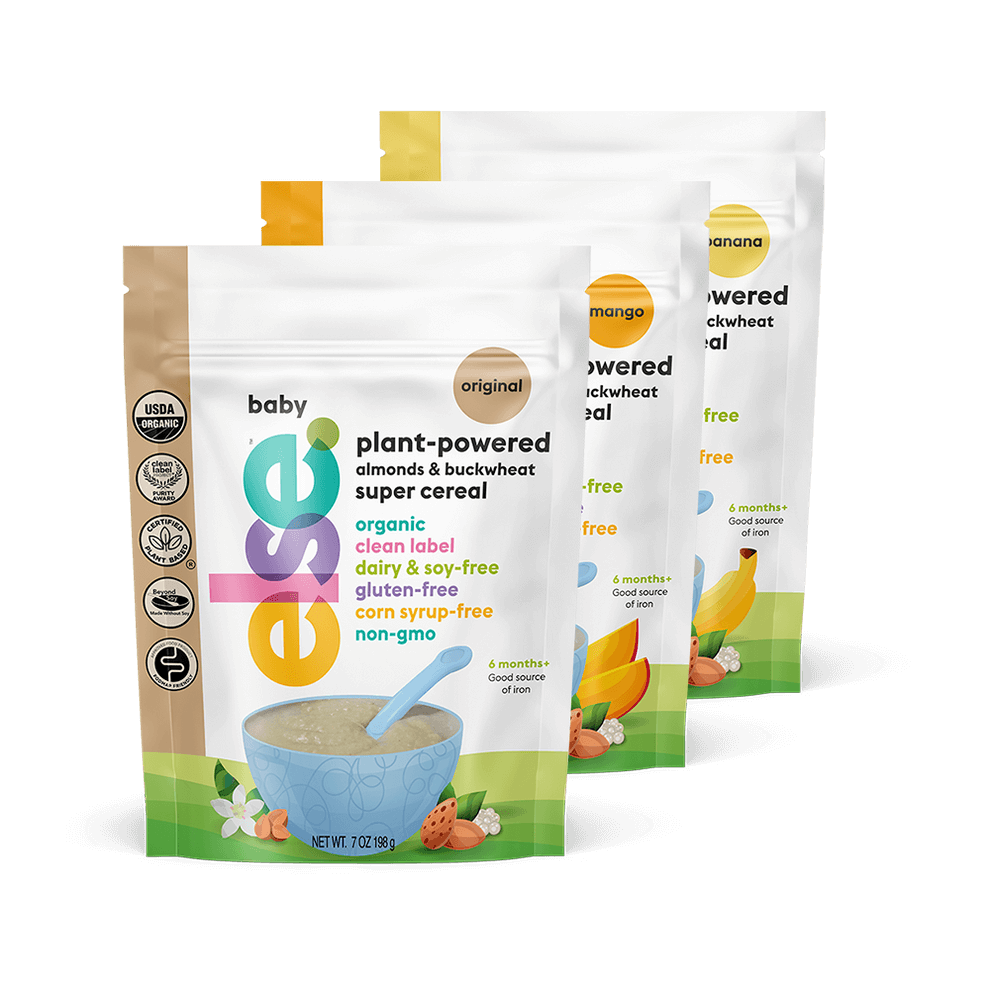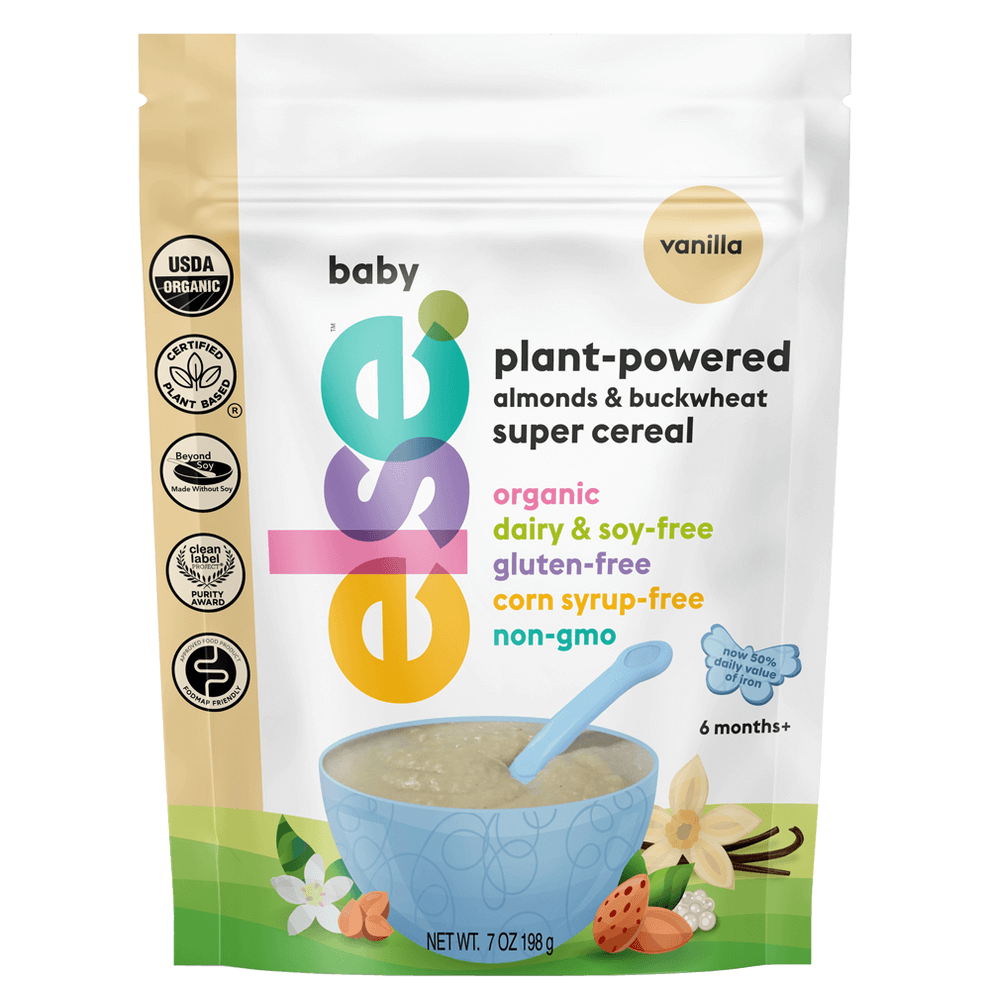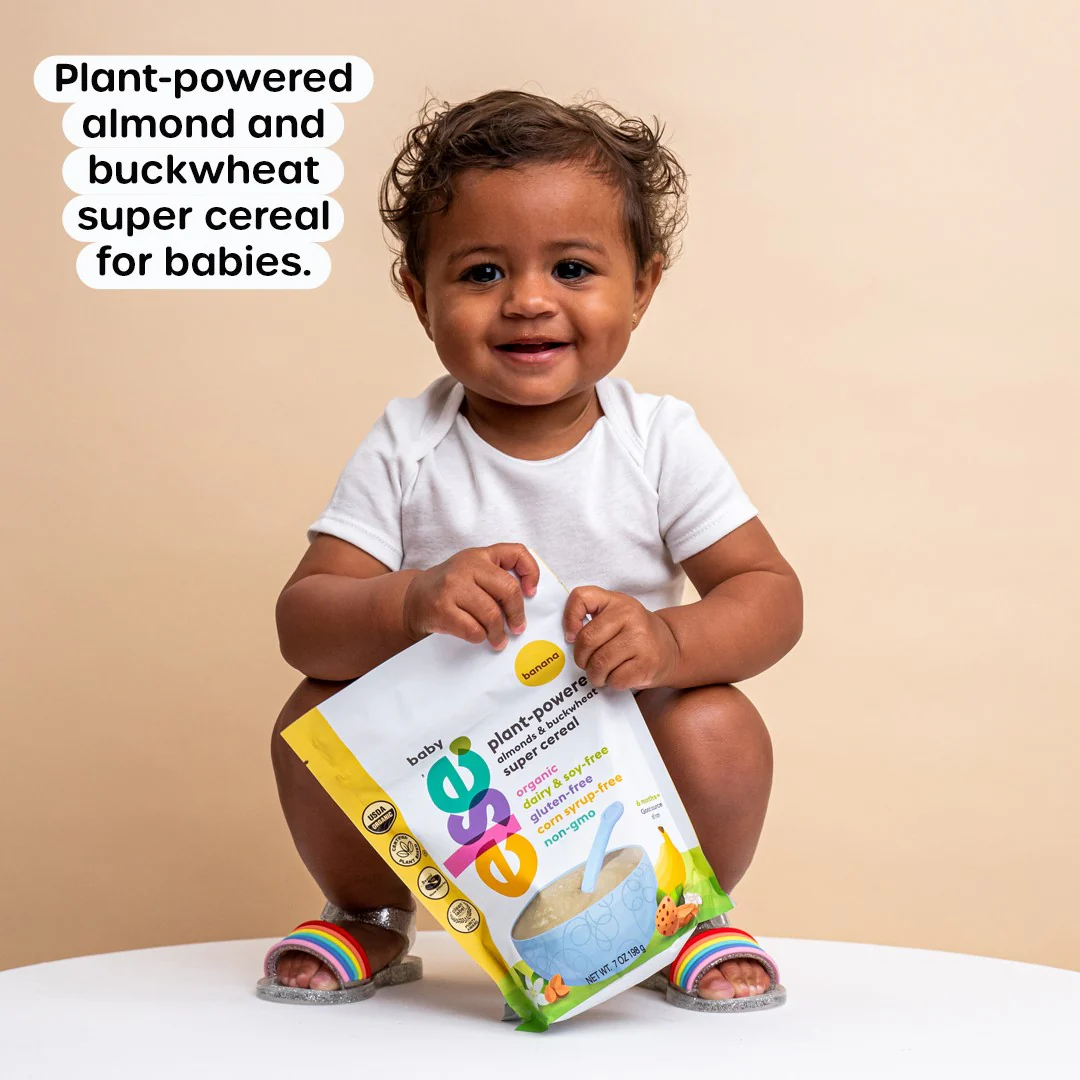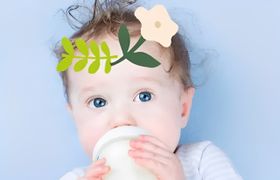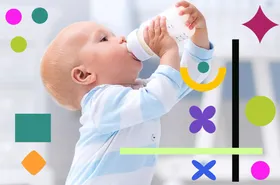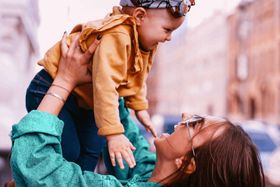Changing Formulas: A Guide to Switching Your Baby's Formula
Feeling uncertain about transitioning your baby's formula? This comprehensive guide offers practical advice and expert insights to navigate the process smoothly.
Updated May 17, 2024

There could be several reasons why you may need to switch your infant's formula to a different brand. Perhaps the current formula is too costly, or you desire a cleaner ingredient list. Or it could be that your baby's sensitive digestive system isn't taking well to it. It's natural to question the safety of switching baby formula brands.
Rest assured, changing formulas or transitioning to a different brand of formula is safe, provided it's done correctly and methodically.
In this guide, we will elucidate how to make the switch in a few straightforward steps. If you're wondering about the correct quantities when supplementing, refer to our blog for detailed information.
Navigating Formula Transitions
Firstly, it's essential to note that a sudden formula switch or going 'formula cold turkey' can be challenging for your baby to adjust to the change. Instead, a gradual transition from one formula to another is recommended. Start by mixing three parts old formula and one part new formula. This gentle introduction allows your baby to adjust to the new type of formula without any drastic changes.
When you want to switch, it's critical to stick to the same type of protein, whether it's cow's milk-based formula, soy formula, or a hydrolyzed formula. If your baby drinks a formula with a different protein, they may experience side effects of switching formula. Always consult your doctor before switching, especially if you suspect your baby is allergic or has true formula intolerance.
Tips for Smooth Formula Transition
Always have enough formula on hand during this transition period. In case of an infant formula shortage or if your usual baby formula is out of stock, having a backup can prove invaluable.
Switching formula brands can be daunting, but with the right approach, you can ensure your baby gets the nutrition they need without any adverse effects. So whether your baby was previously on a powdered formula yet to try a partially hydrolyzed formula, or making the change due to your baby being gassy, remember to give your baby time to get used to a new formula. And of course, always seek professional advice if your baby is having trouble with their usual formula.
» Read more about how much formula to give when supplementing
How to Switch Baby Formula Brands: A Step-By-Step Guide
If you want to switch baby or infant formulas, just follow these five steps:
1. Consult a Doctor Before Switching or Changing Formula
Each baby is unique, with individual health needs and potential allergies. While the internet offers a vast array of resources, it's vital to consult your baby's doctor before making any changes to their diet. When it comes to your little one's health, being cautious is key.
If you suspect your infant might have a milk allergy, it's crucial to reach out to your pediatrician immediately. The doctor might advise switching from a milk-based formula to a hypoallergenic formula or hydrolyzed formula. Before switching formulas, make sure to discuss the potential side effects of changing the baby's usual formula with the doctor.
Your baby's doctor is the best source of advice when it comes to finding a suitable formula for your baby. They may even provide formula samples for you to try. If your baby has been on breast milk and you're considering switching to the same type of formula, your doctor can guide you through the process.
When switching to a different formula, it's crucial to monitor your baby closely for any adverse reactions. If your baby was previously consuming baby cow's milk, for instance, and you're considering switching to a homemade formula, consult your doctor first. They can provide guidance on how to safely switch to the new formula and start your baby on a diet that suits their specific needs.
It's often recommended to start with an equivalent formula ASAP if your baby is experiencing discomfort or showing signs of an allergic reaction. However, remember that the timing of when to switch to a formula is often best determined by a healthcare professional. Doctors can help recommend a formula that can help ensure the transition is smooth for your different baby.
Trusted brands like Else Nutrition now offer plant-based infant formula options with wholesome ingredients like almonds, buckwheat, and tapioca. These formulas are great if you're looking for a sustainable, plant-powered approach.
2. Do Your Research on the Type of Formula Before you Make a Switch
Once you’ve gotten the go-ahead from your pediatrician/doctor, you can start researching different new brands of formulas. As you compare your options for baby formula, pay close attention to their:
- Protein base – Cow’s milk, goat’s milk, and soy milk are three popular protein bases. However, if your infant's stomach is sensitive to soy or dairy or you suspect lactose intolerance with milk formula, you may want to look for a formula with a different type of protein base, like almonds. This adjustment could be what your baby’s delicate tummy needs to enjoy more comfortable digestion. Your baby's preferred formula may not be a soy formula, goat milk formula or cow's milk-based formula if your baby was previously on this type and your baby is gassy. They might also have a true formula intolerance and need to switch to a hypoallergenic formula. If your child has severe allergies and is on a hydrolyzed formula you will want to switch them to one with the same base.
- Nutritional content – By comparing nutritional information across brands, you can find out which formula offers the most vitamins and minerals, as well as the best balance of macronutrients. Make sure you switch to a standard formula that includes all the needed nutrients.
- Clean ingredients – Some baby formulas are processed more than others. If you care about feeding your baby clean ingredients, look for a brand that is GMO-free, low in sugar, and minimally processed.
- Form – You can find formulas in powdered form, concentrated liquid form, and ready-to-use form. Powder and concentrated liquid formulas need to be mixed with water before you serve them to your baby. Of the three, powdered formula is usually the most cost-effective option.
Once you’ve found a new formula that checks all of the boxes, you can put it to the real test by letting your baby try the different formulas out. No one formula is the right match for every child. Each baby is different and needs different nutritional needs. It might take time for your baby to adjust to a new formula due to the switch to the new one. If there are negative side effects of switching formulas switch to a new formula immediately. Find the formula that works the best for your child by testing new ones out. Changing your baby's formula can seem scary but your baby will quickly adjust to the change.
» See the best nutrition tips and tricks for all ages
3. Choose A Formula Introduction Method for Your Baby to Adjust Properly
As you introduce your baby to a new formula and switch, make sure the baby goes in a slow and gradual transition. This will give your baby’s sensitive tummy and taste buds some time to adjust to the new ingredients.
The best time to introduce them to the new formula is in the morning. This way you’ll have plenty of time to notice and take action since your baby might get some allergic reactions or if the switch is agreeing with your baby.
With that being said, here are two methods for gradually transitioning your baby to a new formula:
The Mix Method
Some babies don’t like the taste of new formula right away. To overcome this obstacle, you can serve them a mixture of the two formulas for a few days. This will help them adjust to the new taste.
To use this method, simply increase the ratio of the new formula each time you prepare your baby’s bottle. You can follow a formula schedule that looks something like this:
- First day: 25% new formula, 75% previous formula
- Second day: 50% new formula, 50% previous formula
- Third day: 75% new formula, 25% previous formula
- Fourth day: 100% new formula
You can also prolong each of these steps for multiple days to give your baby an even slower transition. You can have this take a week if needed. Putting one formula to another in this method allows the baby to get used to the new taste and adjust better. Combining the old formula and one part new formula leads to a smooth transition.
Note: Before you try this method, ask your pediatrician if the two formulas’ ingredients can safely be mixed together. If you're using a formula with a different protein base, you may want to avoid this method and try out the following one instead.
The Bottle Method
Another way to slowly introduce a new formula is to give your baby one full bottle of the new formula each day and gradually increase the number, like this:
- First day: One bottle of new formula
- Second day: Two bottles of new formula
- Third day: Three bottles of new formula
- Fourth day: Four bottles of new formula
During the rest of the day, let your baby enjoy their old formula. Continue increasing the number of new-formula bottles your baby drinks until it’s the only one you’re using.
» Check out a step-by-step guide for supplementing your baby with formula at night
4. Monitor Your Baby’s Digestion
As your baby gets used to the new formula, it’s important to pay close attention to their digestion and mood for a few days.
Start by tracking your baby’s digestion and mood for a few days before the transition. This will give you a baseline of data to refer back to. Once you start transitioning your baby to the new formula, take notes about their:
- Spit up frequency
- Diaper change frequency
- Gassiness
- Constipation
- Stool texture and color
- Fussiness
5. Watch Out for Allergic Reactions
While some digestive changes are expected, others may indicate a serious allergic reaction. Dairy-based and soy-based formulas are the most likely ones to cause food allergies.
No matter what type of formula you switch to, you should watch out for the following allergy symptoms:
- Skin rashes
- Eczema
- Hives
- Extreme fussiness
- Vomiting
- Blood-tinged stools
- Facial swelling
- Wheezing
- Lethargy
- Loss of consciousness
Some of these symptoms are signs of an anaphylactic response, so you should seek immediate medical attention if they arise.
Note: As you transition to a new formula, don’t introduce your baby to any new solid foods. This way, you’ll be able to know if the new formula caused the allergic reaction if one occurs.
» Discover the key signs that formula isn't suitable for your baby
How to Know if It's Time to Switch Due to Formula Cold Turkey
In most situations, gradually switching formula types is the best approach. However, there are some exceptions. For example, you may need to switch to a new formula right away if your baby’s current formula is causing:
- Severe digestive issues
- Allergic reactions
- A medical condition
In these scenarios, you’ll want to quit the problematic formula cold turkey (with your pediatrician’s approval). While this sudden switch may lead to some digestive issues for your baby, they’ll typically subside in a few days.
What to Do if Your Baby is Having Troubles to Adjust to New Formula
Some babies will be picky about a new formula, even if you transition them onto it slowly. This is more common with babies who haven’t been introduced to any new tastes from solid foods yet.
If your baby is having a hard time with the switch, you can encourage them to try the new formula by:
- Introducing it when your baby isn’t too hungry or fussy – A super-hungry, fussy baby may be more inclined to reject the new formula if it’s not what they’re used to.
- Feeding them when you're in a calm, relaxed mood – If you’re nervous about your baby’s reaction to the new formula, they may feel your energy and get nervous too. By relaxing beforehand, you can help your baby feel as if everything is okay. Playing soothing music can help you both relax during the process.
- Distracting your baby – Redirecting your baby’s attention away from the new taste can also ease the transition. Sing a soothing song to them or distract them with silly faces.
These small steps can increase the likelihood that your baby will accept the new formula. However, if your baby still rejects the new formula after a few days of offering it to them, you may want to choose another brand that they like better.
» Discover the key signs that formula isn't suitable for your baby
Side Effects of Switching Formula Brands
Anytime you switch formulas, you can expect the following:
- Increased gassiness – As your baby’s digestive system adjusts, it’s not uncommon for them to experience more gassiness. This should subside after a week or two.
- Stool changes – Since every type of formula contains slightly different ratios of protein and fats, switching formulas may cause your baby’s stools to change in color, frequency, and softness. This is to be expected. However, if your baby develops diarrhea, contact your pediatrician and let them know.
While gassiness and stool changes are common with a new formula, it’s still a good idea to keep track of this information. If you notice any significant changes in your baby’s digestion or mood, let your doctor know about them right away.
Else: An Allergen-Free, Plant-Based Formula
As you can see, switching baby formulas is safe and easy if you take the right steps. Whether you want to use formula to supplement while breastfeeding or to wean your baby completely, Else can help, if your baby is over 1.
At Else, we’ve created an allergen-free, plant-based toddler formula and upcoming baby formula that’s packed with nutrition. It’s the clean alternative many parents have been searching for. Rather than using cow’s milk or soy, our Plant-Based Complete Nutrition for Toddlers is made from almonds, buckwheat, and tapioca, which offer all of the vital nutrients your baby needs to grow and develop.
Compared to many other plant-based baby formulas, Else has less sugar and comes fortified with plenty of nourishing vitamins and minerals. It’s also minimally processed, ensuring that each ingredient maintains its nutritional value.
By choosing Else, you’ll be giving your toddler nothing else but the very best.
If you are wondering how to transition your baby from breastmilk to formula or wondering when to start supplementing with formulas, we are here to help! Check out our blog for more information!





